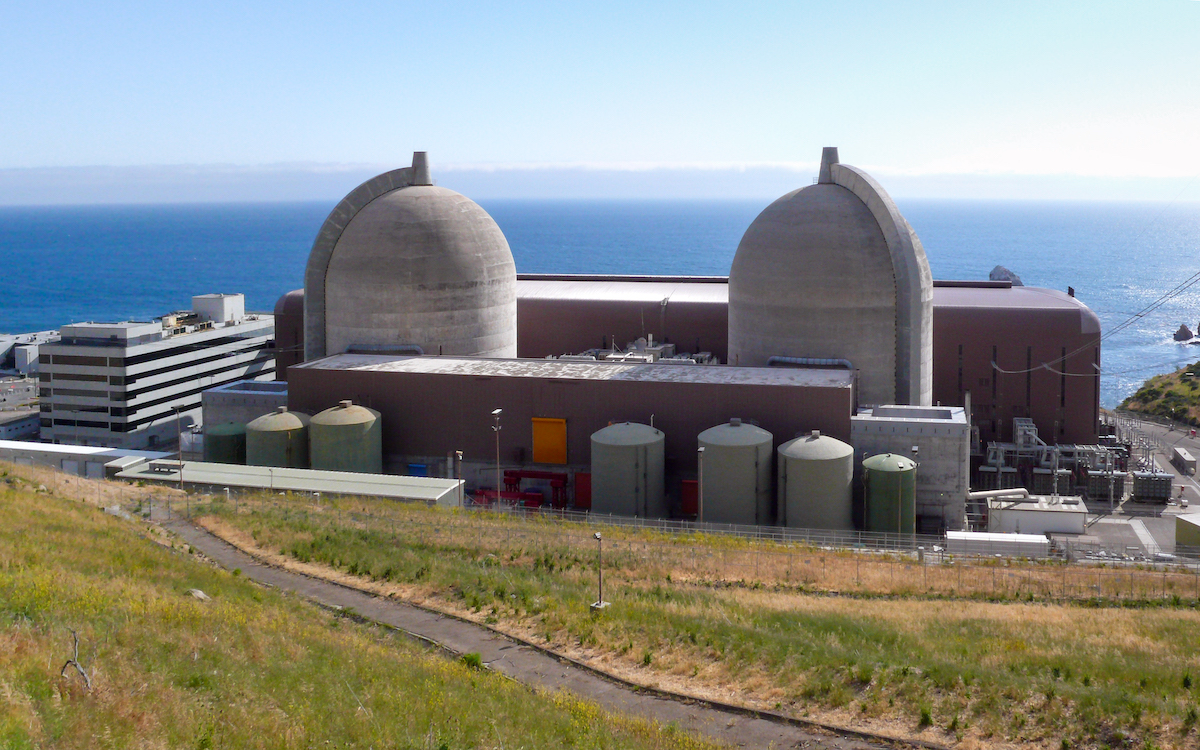Poodle | Zombie Power: Governor Newsom Brings Diablo Canyon Back from the Dead
Hedging Our Bets Between Climate Change and Nuclear Catastrophe

HOT ENUFF FOR U: Depending on who you believe, Santa Barbara is either 101 miles away from Avila Beach, 79.1 miles, or 88.5. Either way, it’s a sweet road trip destination for those of us trying to sneak in a pseudo summer vacation. However far away it actually is, it’s still way too close should anything go wrong with the Diablo Canyon nuclear power plant that PG&E operates up there on the western zit of the Pacific Coast’s nose.
It should be acknowledged that Diablo Canyon has been humming along without major catastrophe, providing carbon-free energy to 3 million homes since PG&E flicked the switch in 1985. That’s not to say, however, that all is hunky-dory. Far from it.
I mention this because of the obvious threat now posed by climate change — which has clearly morphed from one of those arthritically slow-moving zombies as seen in older movies to a more contemporary variant capable of sprinting up walls and across ceilings while eating your brains out.
Because of this, a new generation of Gen Z eco-warriors — perhaps a little too self-enamored by their own brilliance — has adopted an insufferably patronizing tone extolling the carbon-free virtues of nuclear energy when speaking down to old-school enviros who only spent their entire adult life fighting to keep the nuclear genie firmly in the bottle.
For those tuning in late, PG&E announced in 2016 it would turn off the lights at Diablo’s twin reactors in 2024 and 2025 when its licenses with the Nuclear Regulatory Commission (NRC) expire. Retrofitting the plant to seismic safety standards didn’t pencil out when renewable fuels had grown too competitively low — not to mention the wholesale violence inflicted on the marine environment by dumping 2.5 billion gallons of water every day into the Pacific, water 20 degrees hotter than the ocean.
But two weeks ago, Governor Gavin Newsom strong-armed a bill through the legislature allocating $75 million to help PG&E stay open. The feds — under President Biden — set aside another $6 billion to help induce PG&E to seek the necessary license extensions.
I get it. The world is burning. In England, subway rails caught fire as the mercury hit 104. In France, Tour de France organizers hosed down roads to prevent them melting as cyclists zoomed over them. In China, 900 million people are living under heat alerts and glaciers are melting, with flash floods and mudslides anticipated. In the United States, 100 million Americans in 28 states are living under extreme heat warnings. And in Spain, for the first time ever, a heatwave was given a human name — Zoe — where, by the way, a wildfire inferno is raging. Don’t even ask about the millions of Ethiopian refugees forced to flee because of drought and starvation.
Sign Up to get Nick Welsh’s award-winning column, The Angry Poodle delivered straight to your inbox on Saturday mornings.
Newsom is understandably freaked about possible blackouts and brownouts as reservoir levels — from whence hydroelectricity is derived — continue to plummet. Did you know the water mass of the Great Salt Lake has diminished to one-third its normal size? While technically Salt Lake is not such a reservoir, it paints the picture.
If California means business about going fossil-free by the year 2045, we’ll have to use 68 percent more electricity to get there. Diablo Canyon provides 15 percent of the state’s carbon-free electricity. If that goes away, supporters say, that’s the equivalent to 300,000 more cars per day on the road. More melting concrete.
Here’s the rub. For the past few years, Congressmember Salud Carbajal has been moving heaven and earth to launch the nation’s largest wind power plant in ocean waters about 20 miles off the coast of Morro Bay. Depending on who you ask, this could generate one or two times as much carbon-free energy as Diablo Canyon. Maybe even more, the way that technology is evolving. The first offshore leases go on sale next month. Right now, 24 companies are lined up with checkbooks in hand.
For such a wind energy project to work, however, it needs access to the grid system now set up to load electricity produced at Diablo Canyon into the state system. Thus the $64 billion question: Do we forsake a massively promising renewable technology whose time appears ripe in favor of a clean, but inherently risky, technology whose chief virtue is immediate availability?
And for all you eyes-wide-shut eco-nukers out there, PG&E has a documented history of flim-flammery concerning the real and present seismic risks at Diablo Canyon. In 1967, PG&E insisted no nearby faults had moved even a squiggle in 100,000 to a million years. Four years later, the company would “discover” the Hosgri Fault — just three miles from the plant — was capable of inflicting a 7.9 earthquake. Surprise.
Then, 15 years ago, when PG&E was forced against its will to conduct another test, active faults were found within 650 yards of the plant. Eventually, PG&E conceded, also against its will, that these new faults were longer and capable of inflicting bigger jolts. The company’s response? It used a new formula to calculate how much shaking all this could inflict inside the plant. Guess what? It was 50 percent less.
All this history was recounted at a press conference last week by former State Senator Sam Blakeslee, who represented the district in Sacramento. Blakeslee, by the way, is a card-carrying Republican and former Exxon geologist who just happens to have a PhD in earthquake studies.
So how far is it to Avila Beach? I don’t know, but I doubt you can get there from here.
Support the Santa Barbara Independent through a long-term or a single contribution.



